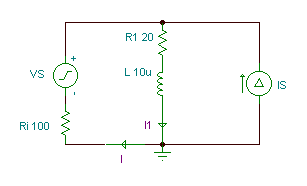Power In Three phase Balanced System
Let us consider a three phase balanced system. A three phase balanced system is analysed considering only one phase and neutral return. This is called per phase analysis. So the above analysis for single phase is true for balanced three phase case. Let the total power here is Pt. Then we get total three phase power as thrice of single phase case.
Let us consider a three phase balanced system. A three phase balanced system is analysed considering only one phase and neutral return. This is called per phase analysis. So the above analysis for single phase is true for balanced three phase case. Let the total power here is Pt. Then we get total three phase power as thrice of single phase case.
Pt = 3 |V| | I | cos φ
It should be remembered that |V| and | I | are the per phase values. and φ is the phase angle of load in per phase analysis.
The above formula for balanced three phase system can be written as
Pt = √3 |Vl| | Il | cos φ
In the above formula Vl and Il are
line voltage and current (Fig-D). This equation is independent of type
of three phase load connection i.e delta or star connected load. You
have to know the line voltage, line current and phase angle φ as above.
This form is very convenient and used often in power calculation.
There is one main difference
between the single phase and total three phase power. The instantaneous
single phase power is pulsating. In the balanced three phase case, each
phase instantaneous power is pulsating but the three pulsating power
waves are 120 degrees displaced from each other. At any instant of time
the total of these three instantaneous power waves is a constant which
is 3 |V| | I | cos φ. So the total power consumed in three phase
balanced system is not pulsating. Non-pulsating power also imply the
desired non-pulsating torque in case of three phase rotating machines.
In large 3-phase motors this is really desired.
*RMS value of AC Sinusoids
The value of AC voltage or current that produces the same heating (or same energy) that is produced if DC voltage or current numerically equal to RMS value of AC is applied instead of AC. This concept helps make the formula for power similar for both DC and AC circuits.
The value of AC voltage or current that produces the same heating (or same energy) that is produced if DC voltage or current numerically equal to RMS value of AC is applied instead of AC. This concept helps make the formula for power similar for both DC and AC circuits.









